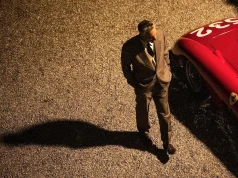
If someone asks you to name a mermaid, any mermaid, what is the first name that comes to mind? Lorelei? Madison? Ariel? Probably the latter, right? You probably even conjured the image of the red-haired Disney princess. Just like when you pick up a Cinderella pumpkin from the store and the familiar image of a beautiful blue ball gown and helper mice pop into your brain. Heck, if someone tells you to, “Let it go,” you might even hear swelling strings and Idina Menzel in the back of your mind.
But mermaids, Italian fairy tales and three-word phrases don’t belong to The Walt Disney Company. Yet, Disney’s interpretations and adoption of popular myths and pop culture dominate how we think about, remember and specify the familiar. Disney historian Sam Gennawey calls this phenomenon “mental real estate” and it’s not just the root of what makes Disney movies work, it’s what makes them unforgettable.
That is because each Disney movie starts with extensive research. For their latest animated endeavor, Moana — the first to focus on the Pacific Islands — the Disney team let that research shape the story they wanted to tell.
“Initially, Ron and John [Clements and Musker, two of Moana’s directors] had a certain idea of the film they wanted to make,” story artist David G. Derrick recounts to Boulder Weekly. “John Lasseter [Disney’s overseer of animated production], he’s a stickler for research, he said, ‘If you’re going to tell this story and set it in the Pacific, you need to go there.’
“When they got there, they experienced the culture and people and completely changed the story,” Derrick continues. “A lot of people don’t realize it, but the Polynesian culture is a rich, vibrant culture that is still alive today.”
That culture is exactly what drew Derrick to the project in the first place. Originally scheduled to work on Zootopia, Derrick jumped ship for Moana because it allowed him to learn more about his own Polynesian heritage, specifically through a connection with his grandmother.
“When the first Polynesians came to Utah, they were forced to — they were segregated out — to this place called Skull Valley, which they named Iosepa,” Derrick says. “She died there and I made a rubbing of her grave, and I put that up above my desk.
“[It] reminded me why I was making this film. It was both a thank you and an apology at the same time, thanking her for this rich heritage that most people don’t fully understand and also an apology for the way she was treated. And all of Polynesia in general.”
That heritage, and the strength derived from it, is the thread on which Moana hangs. The story begins with an island besieged by a terrible plague. To lift the curse, the chief’s daughter, Moana (voiced by newcomer Auli’i Cravalho), sets sail in search of the demigod Maui (voiced by Dwayne Johnson), who can help her find the fertility god that will restore life to her island.
“[Maui]’s stories are ubiquitous throughout all of Polynesia, and in my Samoan genealogy, the very first man is Maui,” Derrick explains. “So it’s not just myth, it’s genealogy that’s important to all the different islands.”
But how does Disney emotionally convey that information to an audience that might not have attachment to Polynesian ancestry? Hyrum Osmond, the co-head of animation for Moana, explains that Disney’s modus operandi is best summed up by legacy Disney animator Mark Henne: “We are not trying to create realistic characters, we are trying to create believable characters that audiences can connect with.”
It also helps when the characters come with catchy songs, here provided by Hamilton scribe Lin-Manuel Miranda and performer Opetaia Foa’i, member of the Oceania music group Te Vaka. American audiences may not be familiar with the stories of Maui or the adventure of Moana, but thanks to top shelf animation and a jaunty jingle from a covetous crab, Moana is destined to take up some mental real estate in moviegoers’ minds.
“There was one man [we met] named Papa Mapei who passed away before the film came out,” Derrick recounts. “He had a quote that really imbued to us the importance of the film: ‘Culturally, you guys have swallowed our culture. For once, let us swallow you.’
“There was a richness to this culture that I had an understanding of, but it went so much deeper,” Derrick says. “I mean, the Polynesian culture created the largest cultural footprint of any culture prior to European expansion. Nobody teaches you that in history.”
Thankfully movies do. Moana is currently in wide release.














